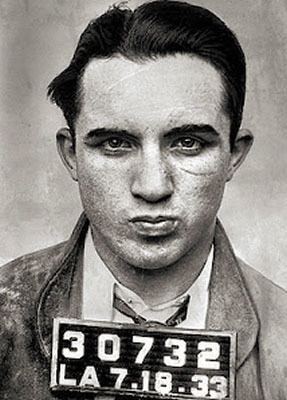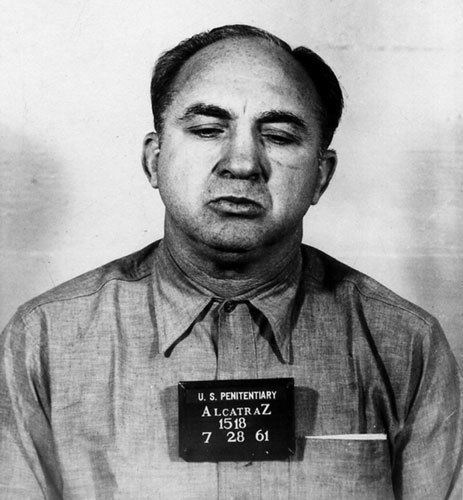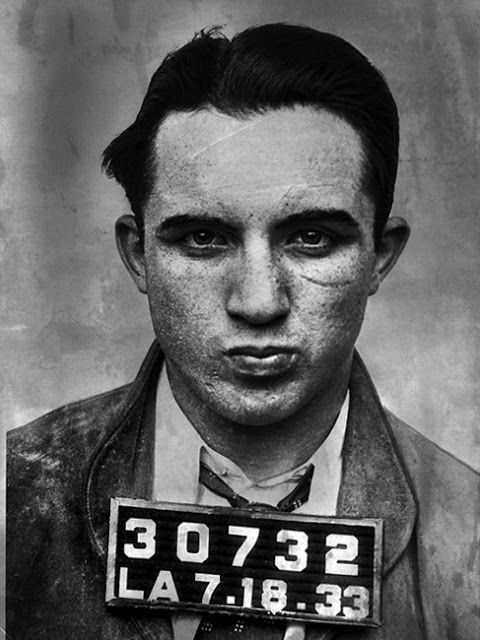Height 5 ft 5 in (1.65 m) Parents Max Cohen, Fanny Cohen Known for Mob Activity | Occupation Mobster Name Mickey Cohen Nationality United States | |
 | ||
Full Name Meyer Harris Cohen Died July 29, 1976, Los Angeles, California, United States Spouse Lavonne Weaver (m. 1940–1951) Similar People | ||
Mickey cohen biography documentary english part 1
Meyer Harris "Mickey" Cohen (September 4, 1913 – July 29, 1976) was an American gangster based in Los Angeles and boss of the Cohen crime family. He also had strong ties to the Italian American Mafia from the 1930s through 1960s.
Contents
- Mickey cohen biography documentary english part 1
- Mickey cohen the only modern biography of mobster mickey cohen by brad lewis
- Early life
- Boxing career
- Criminal career
- Prohibition and the Chicago Outfit
- From syndicate bodyguard to Sunset Strip kingpin
- Later years
- Death
- Films
- Games
- Literature
- Television
- References

Mickey cohen the only modern biography of mobster mickey cohen by brad lewis
Early life

Mickey Cohen was born on September 4, 1913, into an Orthodox Jewish family living in the Jewish Brownsville section of Brooklyn. His mother Fanny, who had become widowed in September 1914, had emigrated from Kiev, Ukraine. At age 6, Mickey was selling newspapers on the street; one of his brothers, Louie or Harry, would drop him off at his regular corner, Soho and Brooklyn Streets. Soon, however, Fanny moved her family to the Boyle Heights neighborhood of Los Angeles. In 1922, petty crime landed Mickey in reform school there.
Boxing career

As a teenager, Cohen began boxing in illegal prizefights in Los Angeles. In 1929, the 15-year-old moved from Los Angeles to Cleveland, Ohio, to train as a professional boxer. His first professional boxing match was on April 8, 1930, against Patsy Farr in Cleveland. It was one of the preliminary fights on the card for the Paul Pirrone/Jimmy Goodrich feature bout. On April 11, 1933, Cohen fought against Chalky Wright in Los Angeles. Wright won the match, and Mickey was incorrectly identified as "Mickey Cohen from Denver, Colorado" in the Los Angeles Times sports page report. His last fight was on May 14, 1933, against Baby Arizmendi in Tijuana, Mexico. On June 12, 1931, Cohen fought and lost a match against World Featherweight Champion Tommy Paul, having been knocked out cold after 2:20 into the first round. It was during this round he earned the moniker "Gangster Mickey Cohen".
Criminal career

In Cleveland, Cohen met Lou Rothkopf, an associate of Moe Dalitz's. Cohen later moved to New York, where he became an associate of labor racketeer Johnny Dio's brother, Tommy Dioguardi, and with Owney Madden. Finally, Cohen went to Chicago, where he ran a gambling operation for the Chicago Outfit, Al Capone's powerful criminal organization.
Prohibition and the Chicago Outfit

During Prohibition, Cohen moved to Chicago and became involved in organized crime, working as an enforcer for the Chicago Outfit, where he briefly met Al Capone. During this period Cohen was arrested for his role in the deaths of several gangsters in a card game that went wrong.

After a brief TIME in prison, Cohen was released and began running card games and other illegal gambling operations. He later became an associate of Capone's younger brother, Mattie Capone. While working for Jake Guzik, Cohen was forced to flee Chicago after an argument with a rival gambler.

In Cleveland, Cohen again worked for Lou Rothkopf, an associate of Meyer Lansky and Benjamin "Bugsy" Siegel's. However, there was little work available for Cohen in Cleveland, so Lansky and Rothkopf arranged for him to work with Siegel in Los Angeles.
From syndicate bodyguard to Sunset Strip kingpin
In 1939, Cohen arrived in Los Angeles to work under "Bugsy" Siegel. During their association, Mickey helped set up the Flamingo Hotel in Las Vegas and ran its sports book operation. He also was instrumental in setting up the race wire, which was essential to Vegas betting.
In 1947, the crime families ordered the murder of Siegel due to his mismanagement of the Flamingo Hotel, most likely because Siegel or his girlfriend Virginia Hill were skimming money. According to one account which does not appear in newspapers, Cohen reacted violently to Siegel's murder. Entering the Hotel Roosevelt, where he believed the killers were staying, Cohen fired rounds from his two .45 caliber semi-automatic handguns into the lobby ceiling and demanded that the assassins meet him outside in 10 minutes. However, no one appeared, and Cohen was forced to flee when the police arrived.
Cohen's violent methods came to the attention of state and federal authorities investigating Jack Dragna's operations. During this time, Cohen faced many attempts on his Life, including the bombing of his home on posh Moreno Avenue in Brentwood. Cohen soon converted his house into a fortress, installing floodlights, alarm systems, and a well-equipped arsenal kept, as he often joked, next to his 200 tailor-made suits. Cohen briefly hired bodyguard Johnny Stompanato before Stompanato was killed by Cheryl Crane, the daughter of actress Lana Turner. Cohen bought a cheap coffin for Stompanato's funeral and then gave Turner's love letters to Stompanato to the press.
Later years
In 1950, Cohen was investigated along with numerous other underworld figures by a U.S. Senate committee known as the Kefauver Commission. As a result of this investigation, Cohen was convicted of tax evasion in June 1951 and sentenced to prison for four years.
When he was released in October 1955, he became an international celebrity. He ran floral shops, paint stores, nightclubs, casinos, gas stations, a men's haberdashery, and even drove an ice cream van on San Vicente Boulevard in the Brentwood section of Los Angeles, according to author Richard Lamparski.
In 1957, TIME magazine wrote a brief article about Cohen's meeting with Billy Graham. Cohen said, "I am very high on the Christian way of life. Billy came up, and before we had food he said—What do you call it. that thing they say before food? Grace? Yeah, grace. Then we talked a lot about Christianity and stuff." Allegedly when Mickey did not change his lifestyle, he was confronted by some Christian acquaintances. His response: "Christian football players, Christian cowboys, Christian politicians; why not a Christian gangster?"
In 1961, Cohen was again convicted of tax evasion and sent to Alcatraz. He was the only prisoner ever bailed out of Alcatraz; his bond was signed by U.S. Supreme Court Chief Justice Earl Warren. After his appeals failed, Cohen was sent to a federal prison in Atlanta, Georgia. His heavily armored Cadillac from this period was confiscated by the Los Angeles Police Department and is now on display at the Southward Car Museum in New Zealand. During his time at the Atlanta Federal Penitentiary, inmate Burl Estes McDonald attempted to kill Cohen with a lead pipe. This happened on August 14, 1963. In 1972, Cohen was released from the Atlanta Federal Penitentiary, where he had spoken out against prison abuse. He had been misdiagnosed with an ulcer, which turned out to be stomach cancer. After undergoing surgery, he continued touring the U.S. and made television appearances, once with Ramsey Clark.
Death
Cohen, who was 62, died in his sleep in 1976 and is interred in the Hillside Memorial Park Cemetery in Culver City, California.
